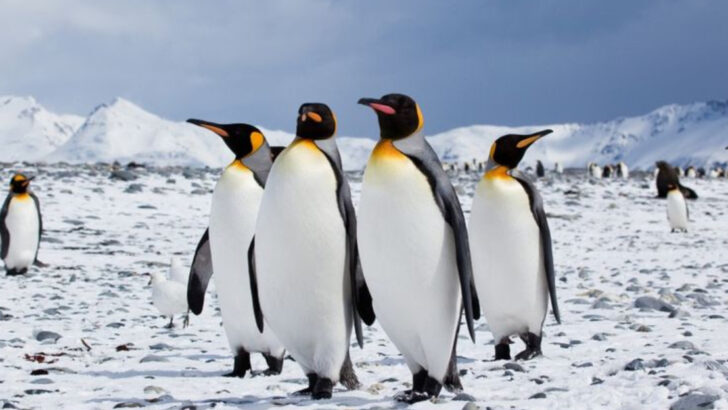Penguins don’t just survive in the cold—they outsmart it. While most animals would freeze or flee, these tuxedoed wonders face blizzards head-on. They slide across ice like pros, huddle by the hundreds for warmth, and dive into icy waters without flinching. Some even go months without food, braving brutal winds and darkness, just to raise a single chick. It’s not luck—it’s strategy. Here are 11 penguin species and the wild, unexpected survival tricks that keep them alive where almost nothing else dares to live.
Emperor Penguin
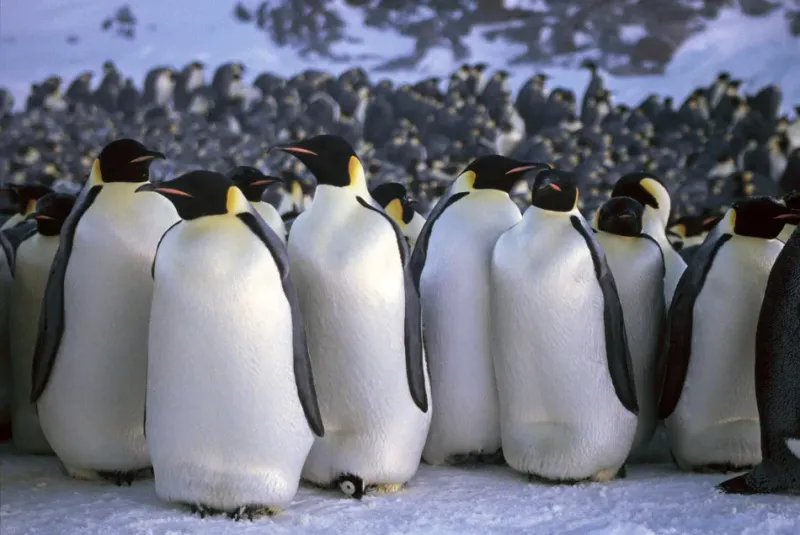
Emperor Penguins are the giants of the penguin world, standing almost four feet tall. They are known for their remarkable resilience in the face of Antarctic winters. During breeding season, males endure months without food, huddling together for warmth. This communal living forms a natural barrier against the biting cold.
Their unique breeding cycle, synchronized with the harshest weather, ensures that chicks hatch when food is most abundant. Their ability to dive deep in search of fish also highlights their adaptability. Emperor Penguins’ majestic presence encapsulates the spirit of survival in unforgiving conditions.
Adelie Penguin
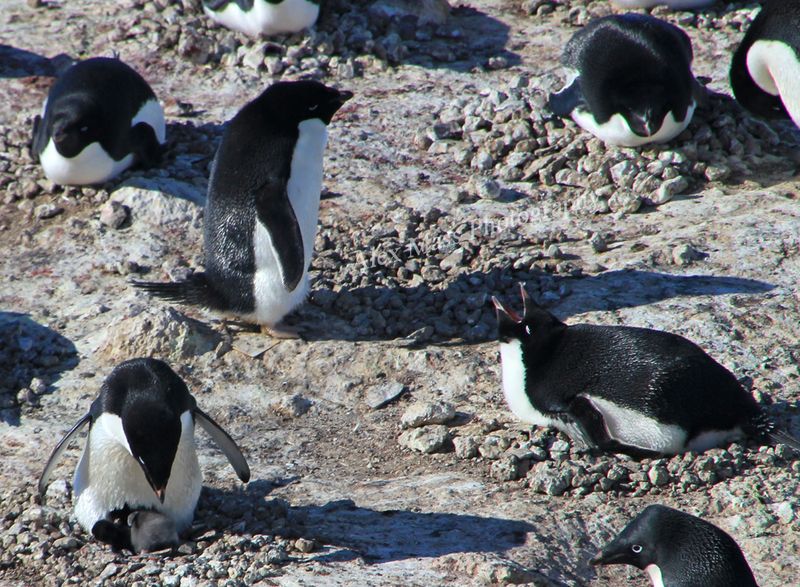
Adelie Penguins are small but mighty, thriving in the icy landscapes of Antarctica. Known for their playful nature, these penguins build nests from stones, showcasing their resourcefulness.
During breeding season, males collect pebbles to woo potential mates, demonstrating their commitment to family. Their social structure ensures group protection against predators, enhancing survival prospects.
Adelies’ ability to navigate icy waters with agility helps them evade threats and catch fish. Their resilience and adaptability make them remarkable survivors in a frozen world, reflecting the delicate balance of life in extreme climates.
King Penguin
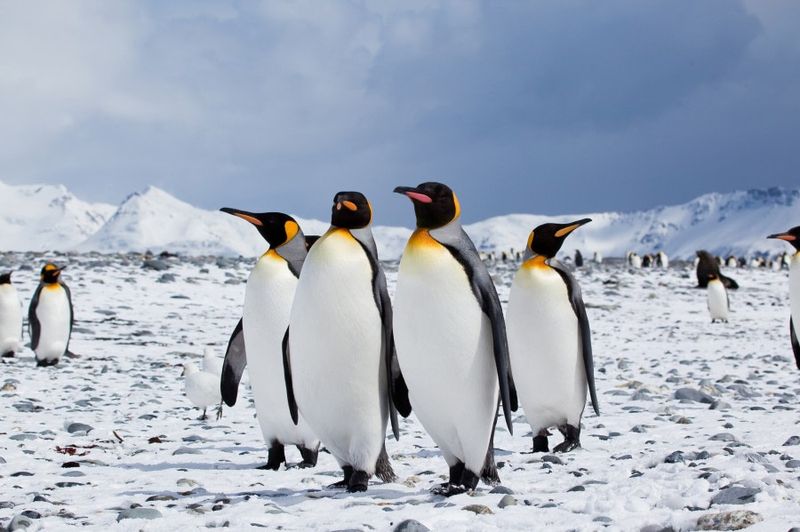
King Penguins are known for their striking appearance and regal demeanor. Taller than most penguins, they are second only to the Emperor in size. Their vibrant plumage and golden highlights make them easily recognizable.
King Penguins breed on sub-Antarctic islands, where the climate is less severe than Antarctica. They have a unique breeding cycle lasting over a year, allowing for chick nurturing in varying conditions.
Their social colonies provide warmth and protection, while their fishing prowess in cold waters ensures sustenance. King Penguins epitomize survival with grace and elegance.
Gentoo Penguin
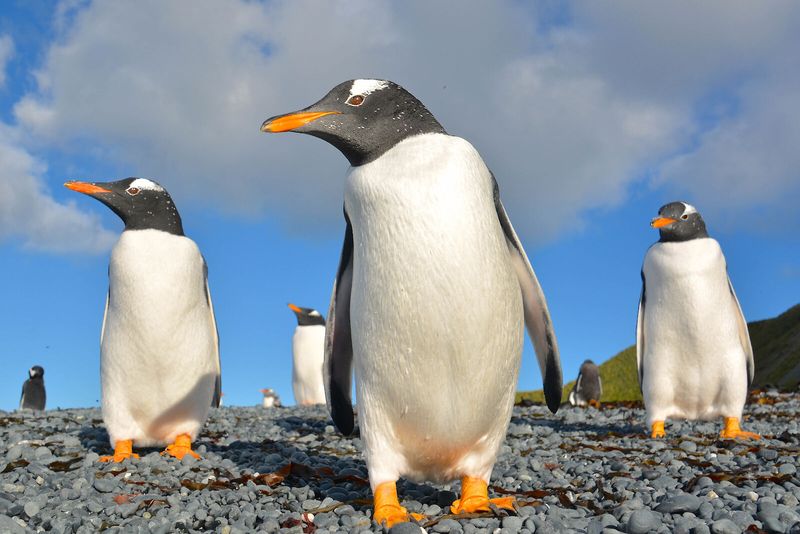
Gentoo Penguins are the sprinters of the penguin world, reaching speeds of up to 22 mph underwater. They inhabit islands in the Southern Hemisphere, where their adaptability shines.
Gentoos use their speed to outmaneuver predators and catch fish, showcasing their agility. Nesting in grass and moss provides insulation for their young against the elements.
These penguins are incredibly social, often seen in large colonies. Their vibrant communication and cooperative parenting make them fascinating subjects of study. Gentoos’ resilience in diverse climates highlights their evolutionary success.
Chinstrap Penguin
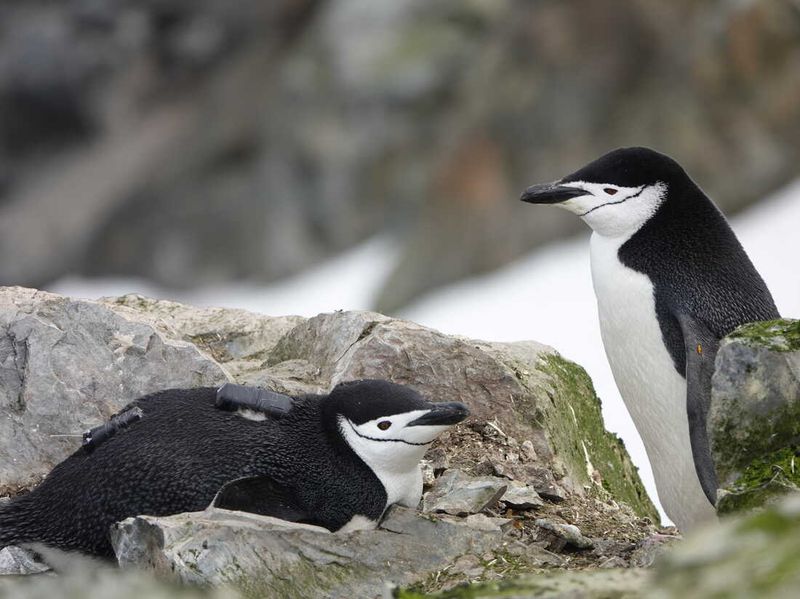
Chinstrap Penguins are unmistakable with their distinctive facial markings. They inhabit islands in the Southern Ocean, where their adaptability to rocky terrains is evident.
These penguins are known for their loud, aggressive calls, which help establish territory and deter rivals. Their ability to climb steep, rocky slopes to reach nesting sites showcases their strength and determination.
Chinstraps dive deep to forage, showcasing remarkable endurance. Their social structures, combined with vocal communication, ensure survival in harsh environments. Their tenacity and boldness make them intriguing survivors of the polar world.
Macaroni Penguin
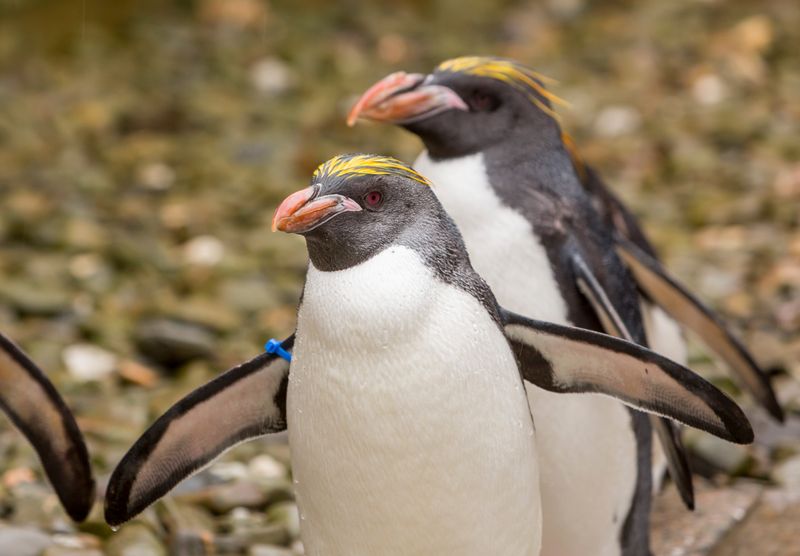
Macaroni Penguins are flamboyant and bold, easily recognized by their bright orange crests. They inhabit sub-Antarctic regions, where their nesting habits are as colorful as their appearance.
Known for their noisy colonies, Macaronis display remarkable social behavior. Their ability to dive deeply for krill and fish is vital for survival in nutrient-rich waters.
Macaroni Penguins’ resilience lies in their adaptability to varying marine conditions. Their vivid presence and lively interactions make them captivating subjects. Their survival is a testament to their resourcefulness and vibrant community life.
Rockhopper Penguin
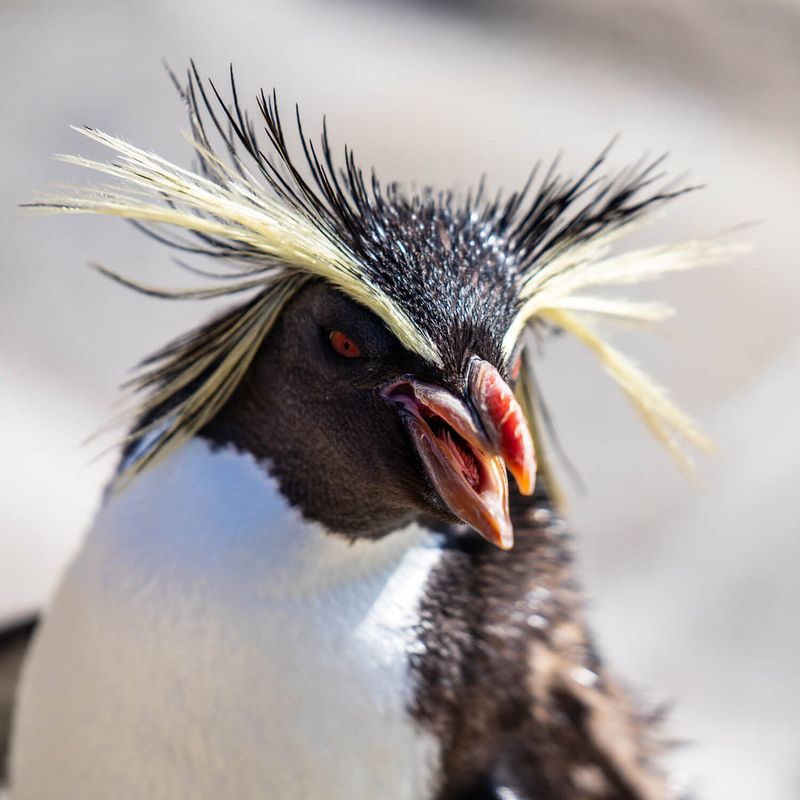
Rockhopper Penguins are the rebels of the penguin world, known for their energetic antics and distinctive spiky feathers. Their habitat on rocky shores demands agility and boldness.
These penguins are adept at hopping across uneven terrain, a skill crucial for avoiding predators and reaching feeding areas. Their diet, rich in squid and krill, sustains them in nutrient-rich waters.
Rockhoppers are social creatures, often engaging in lively group activities. Their curious nature and striking appearance make them unforgettable. Rockhoppers’ adaptability and energetic spirit are key to their survival in formidable environments.
Little Blue Penguin
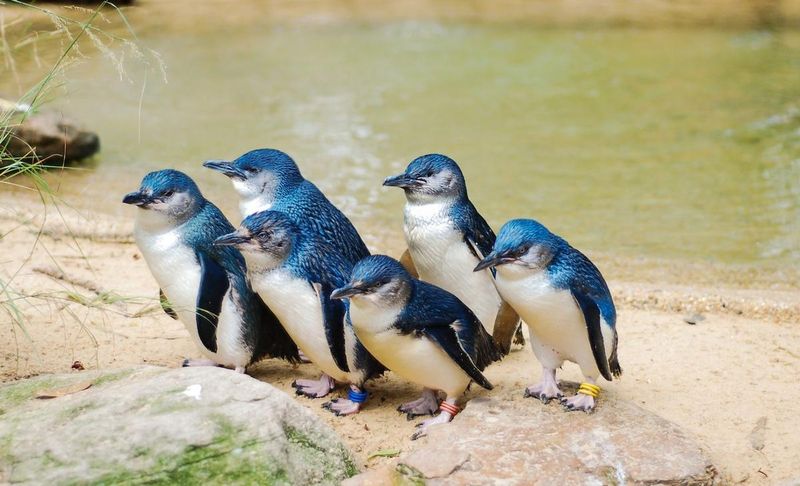
Little Blue Penguins, also known as Fairy Penguins, are the smallest of all penguin species. Found along the coastlines of Australia and New Zealand, they charm with their petite size and blue plumage.
These penguins are nocturnal, venturing out to sea under the cover of darkness to feed, minimizing predator threats. Their burrow nests offer safety and warmth for raising chicks.
Despite their size, Little Blues exhibit remarkable resilience, making long commutes between ocean and nest. Their charming appearance and unique habits highlight their adaptability in diverse environments.
Fiordland Penguin
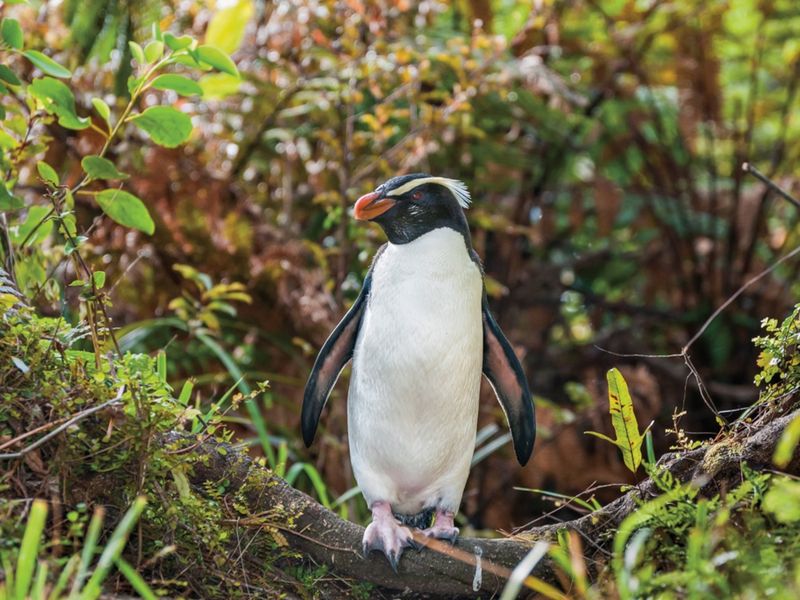
Fiordland Penguins are secretive and elusive, residing in the dense coastal rainforests of New Zealand. Known for their striking yellow eye-stripes, they blend seamlessly into their verdant habitat.
These penguins nest in secluded locations, often concealed by thick vegetation, providing protection from predators. Their solitary nature contrasts with the social behavior of other penguin species.
Fiordlands forage in nearby waters, relying on fish and squid to sustain them. Their unique forest-dwelling lifestyle sets them apart, showcasing their adaptability. Fiordland Penguins’ mysterious aura captivates those who glimpse them in their natural habitat.
Yellow-eyed Penguin
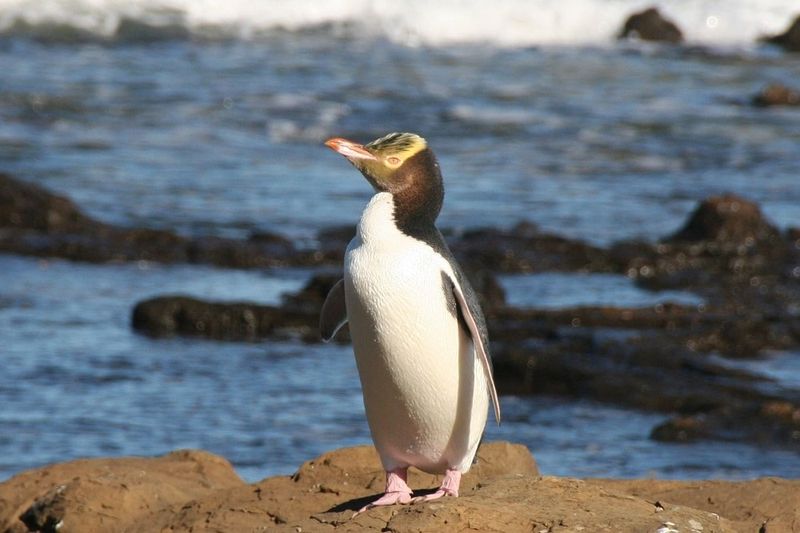
Yellow-eyed Penguins, or Hoiho, are named for their striking yellow eyes and unique head markings. Found in New Zealand, they are among the world’s rarest penguin species.
Hoiho are shy and reclusive, preferring isolated beaches for nesting. Their low reproductive rate makes each breeding success crucial. Their diet, rich in fish, reflects their dependence on healthy marine ecosystems.
Conservation efforts are vital for their survival, highlighting human impact on fragile species. Yellow-eyed Penguins’ distinct appearance and gentle demeanor make them symbols of wildlife conservation. Their survival story is one of hope and determination.
Magellanic Penguin
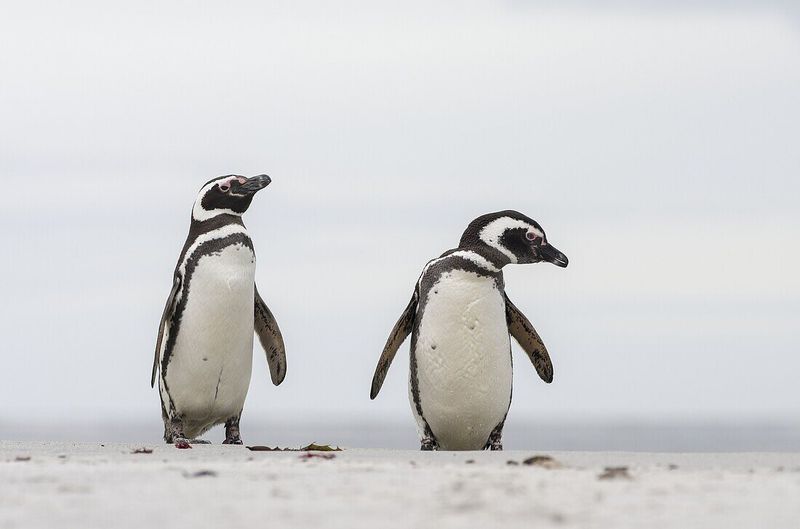
Magellanic Penguins, native to South American coastlines, are known for their distinctive black and white banding. Their migratory habits cover thousands of miles annually.
These penguins form large colonies, providing collective security against predators. Their burrow nests, often dug in sandy soil, offer protection from harsh weather.
Magellanics feed on a diet of fish and squid, showcasing their skill as ocean hunters. Their adaptability across diverse environments highlights their resilience. Magellanic Penguins’ striking appearance and social behavior make them fascinating subjects of study, embodying survival in ever-changing landscapes.

